by Cynthia Brian
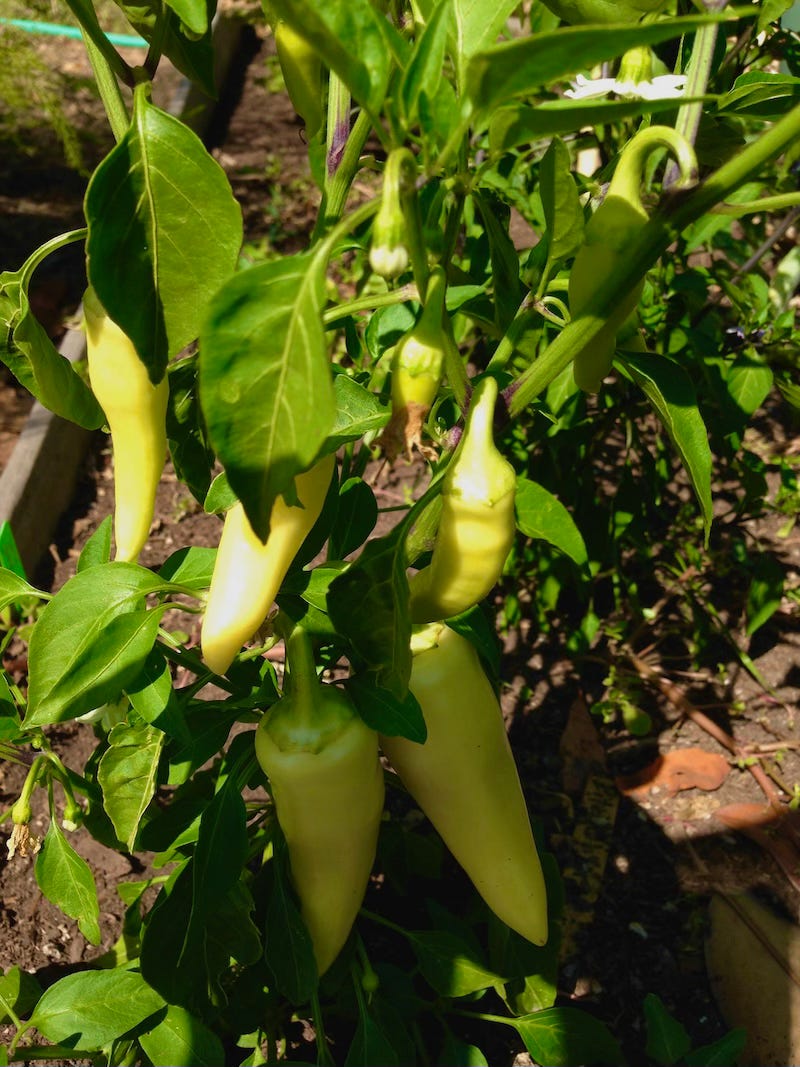
“I farm the soil which yields my food, I share creation. Kings can do no more.” Chinese Proverb
Last week I hosted “Nonie Camp” for my granddaughter. We spent four days and nights of uninterrupted, farm-inspired outdoor time together, chez moi. First thing every morning she happily began her chores: feeding the animals, watering the patio plants, and filling the fountains. After multiple activities including climbing trees, building forts, shooting hoops, skipping rope, swinging, swimming, and playing, our stomachs growled with hunger. Into the potager, we trekked. As we tended the garden and picked fruits and vegetables, she exclaimed. “This is amazing, Nonie. We are growing dinner!”
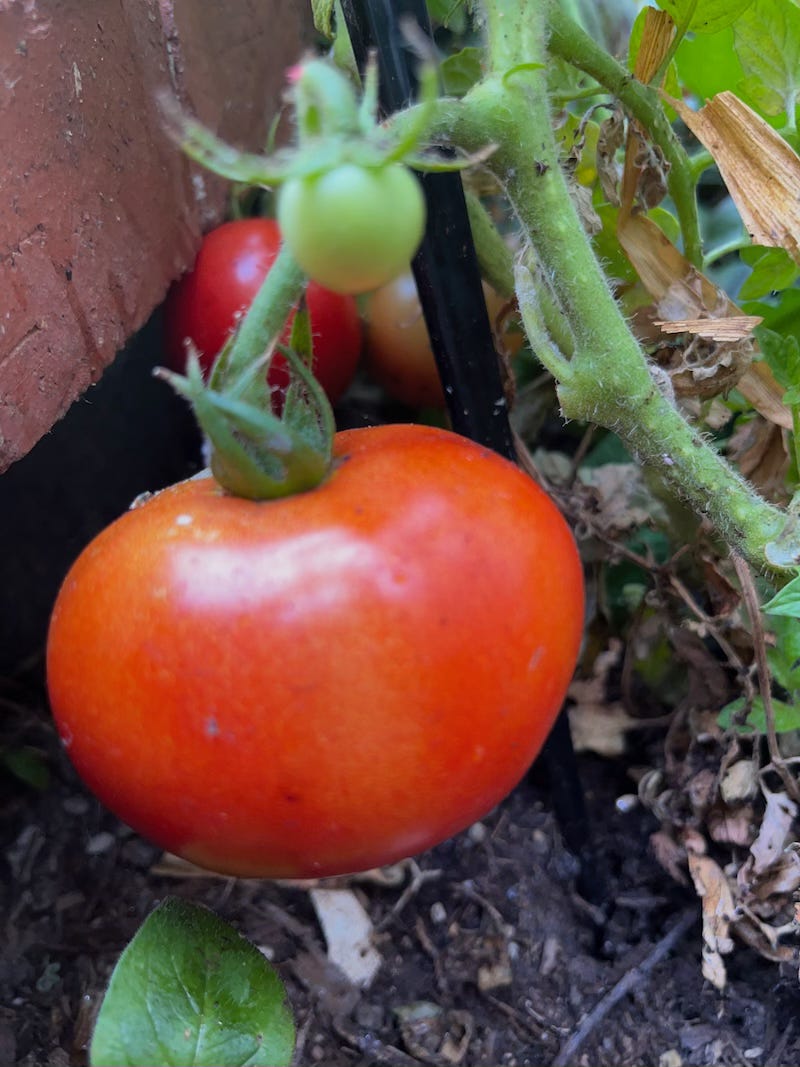
As an advocate for sustainability and cultivating our food, I was thrilled that she recognized the wonder of being able to step just beyond our doorstep into nature to harvest a healthy meal. With the hot weather and lengthened daylight, tomatoes, peppers, zucchini, corn, and a multitude of other crops are ripe and ready for consumption. I wait all year to eat fresh tomatoes, make tomato sandwiches, and toss up salads of tomato, cucumber, onions, and basil.
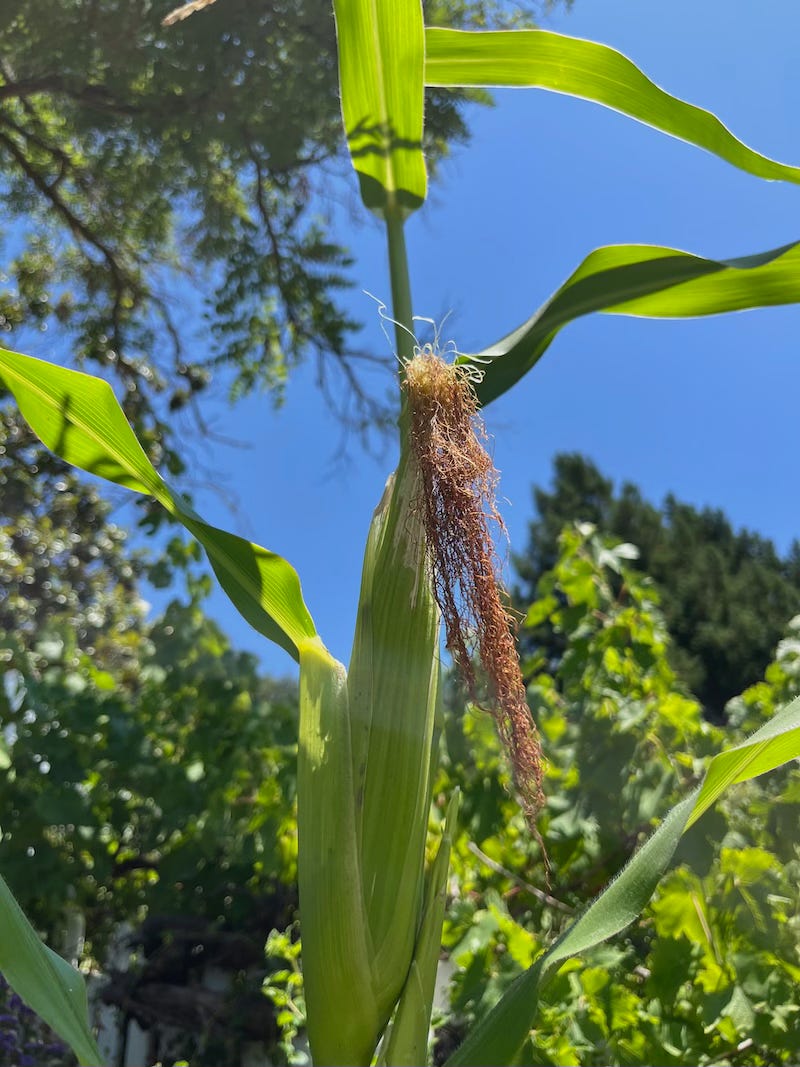
Our warm and sunny summer also offers numerous delicious herbs to be clipped for our cookouts.
Basil: Harvest the leaves of basil regularly to encourage new growth. Mixed with olive oil and garlic, basil makes a scrumptious pesto.
Cilantro: Cilantro can also be made into a pesto sauce, and is an essential ingredient in Mexican, Indian, and many Asian dishes. It bolts when it gets hot. Use the seeds, known as coriander, as a spice.
Dill: The leaves, flowers, and seeds add flavor to pickles, salads, seafood, dips, and sauces.
Basil, cilantro, and dill are summer-season herbs in Northern California.
Perennial herbs that can be snipped year-round include:
Society Garlic: Many people aren’t aware that the deer-resistant flowers and leaves of society garlic are edible. I use them as garnish on baked potatoes as well as in sandwiches.
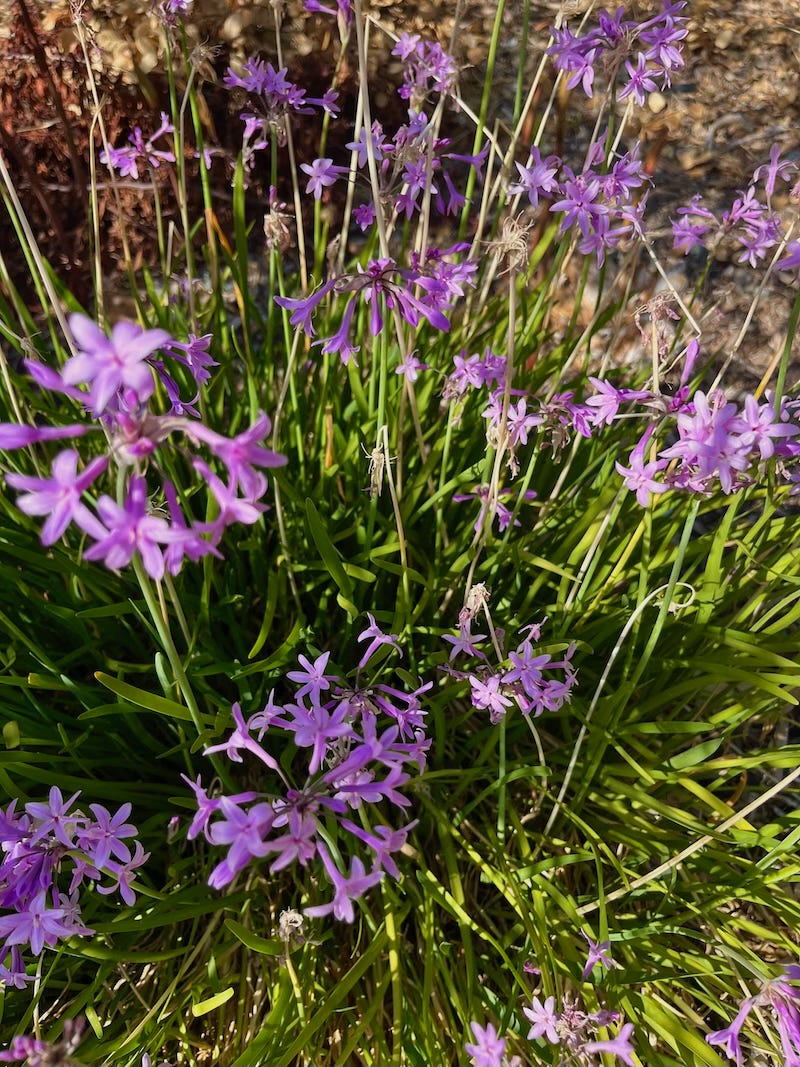
Chives: To keep the plant producing, snip this onion-flavored herb regularly.
Mint: Mint adds an energizing flavor to iced beverages, and of course, is delectable with lamb and many desserts. Grow mint in a container as it is an aggressive spreader.
Thyme: For the best flavor, harvest thyme before flowering and use the fresh leaves in soups, stews, roasts, and marinades. Thyme is a key component in bouquet garni and herbes de Provence.
Rosemary: Rosemary is a favorite of mine to add flavor to BBQ. Use the woody stems as a skewer for grilling. One plant of rosemary is all you need.
Oregano and Sage: Both are essential in Mediterranean cuisines and as garnishes for savory dishes. Use the leaves as needed and avoid cutting back more than a third of the plant at a time.
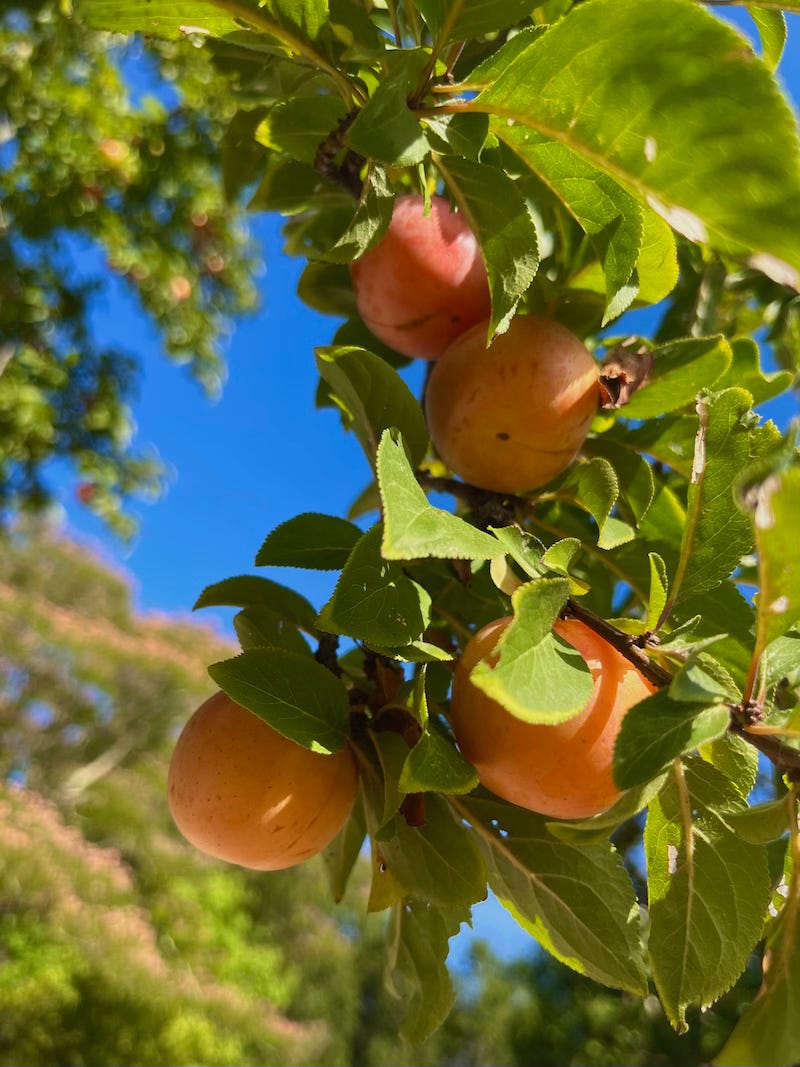
At the end of June every year, I harvest my cherry plums. This year a strange thing transpired with one of my trees. My twenty-year-old plum tree no longer bore purple plums, but large orange plums that ripened in August. We picked a basket, which had a sweet apricot taste. Since I grow so many roses and continue to deadhead the spent blooms every few days, I have spectacular roses constantly in bloom. For a special summer salad, try scattering a few rose petals on a platter of peaches, plums, and melon dressed with a homemade lemon and herb vinaigrette. Cool, refreshing, and delectable.
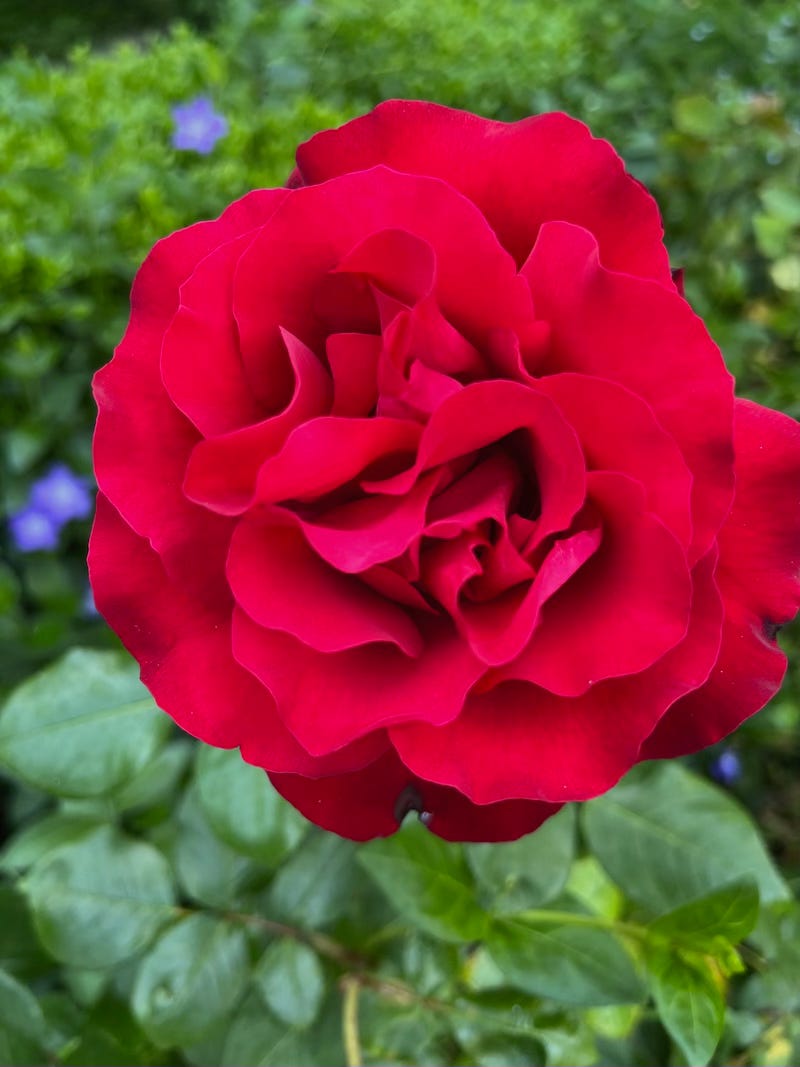
My granddaughter was impressed that the birds and wildlife also enjoyed a feast of plenty from the garden. We watched the hummingbirds darting between the blooms of the crape myrtle trees, the bees gathering nectar from the pink clover, and the bunnies munching the Bird’s Foot Trefoil, a member of the pea family. Bird’s Foot Trefoil is rich in nitrogen with equal protein to alfalfa. It is often used in pastures and feed for cows and cattle. Both clover and Bird’s Foot Trefoil are great alternatives or additives to a grass lawn as they remain green, even in the hot weather, albeit mowing is necessary to remove the flowers.
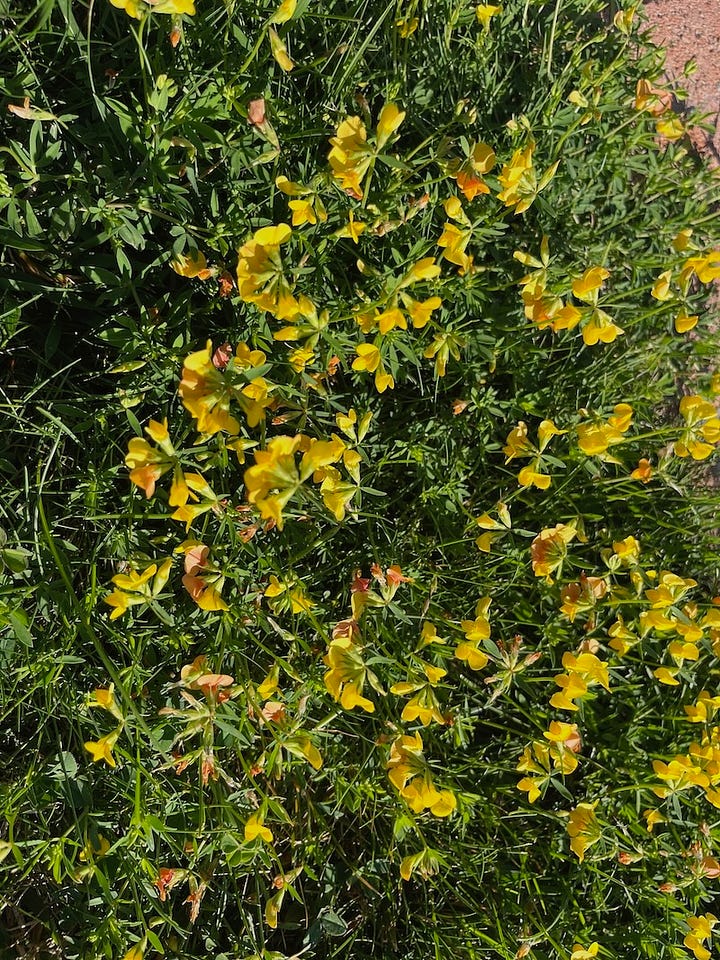
The benefits of growing our dinners are immense. Fresh, organic produce is nutritious. When we are cognizant of the composition of our soil, growing our food is the healthier option. We save money on buying groceries, with homegrown being more economical. We can be more sustainable and reduce our carbon footprint by minimizing packaging. One of my favorite reasons is the satisfaction of connecting to the earth and watching the growing process.
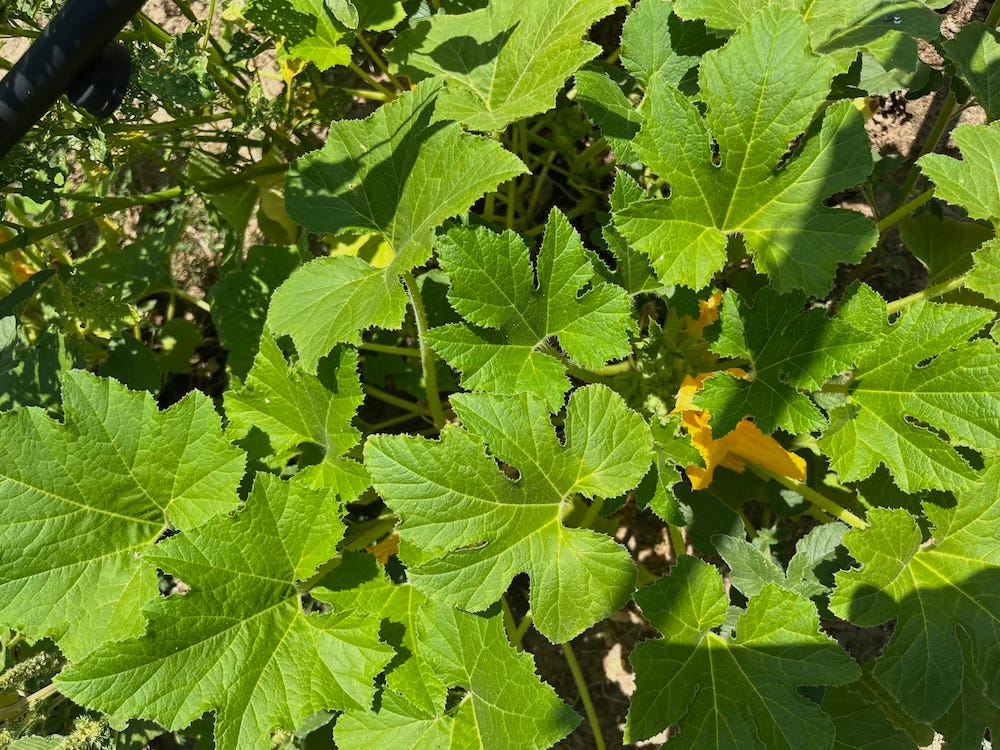
Every day of “Nonie Camp” my granddaughter collected the chicken eggs and then went into the garden to pull a few weeds and gather our dinner. She reaped the rewards of organic homegrown and delighted me with her words, “Hmmm, this is so yummy!” Hopefully, she will pass on her love of nature to a future generation and host her version of “Nonie Camp”.
Kings and Queens can do no more!
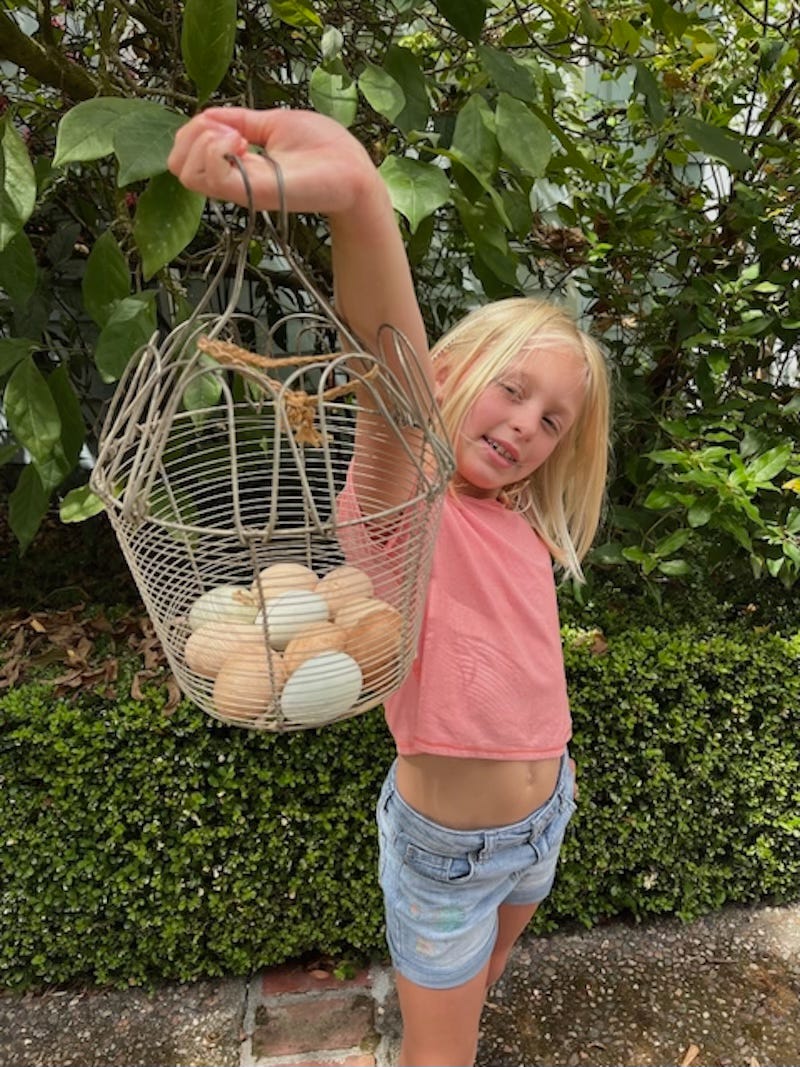
Read Lamorinda Weekly https://lamorindaweekly.com/archive/issue1813/Digging-Deep-with-Goddess-Gardener-Cynthia-Brian-Growing-Dinner.html
For more gardening advice for all seasons, check out Growing with the Goddess Gardener at https://www.CynthiaBrian.com/books. Raised in the vineyards of Napa County, Cynthia Brian is a New York Times best-selling author, actor, radio personality, speaker, media and writing coach as well as the Founder and Executive Director of Be the Star You Are!® 501 c3 which was just honored as the 2024 Nonprofit of the Year by the Moraga Chamber of Commerce. Tune into Cynthia’s StarStyle® Radio Broadcast at www.StarStyleRadio.com. Her newest children’s picture book, Books in the Barnyard: Oh Deer!, from the series, Stella Bella’s Barnyard Adventures is available for discounted pre-sales at https://www.CynthiaBrian.com/online-store. Hire Cynthia for writing projects, garden consults, and inspirational lectures. Cynthia@GoddessGardener.com

Thanks for reading StarStyle® Empowerment! This post is public so feel free to share it.
ShareView draft historySettings






